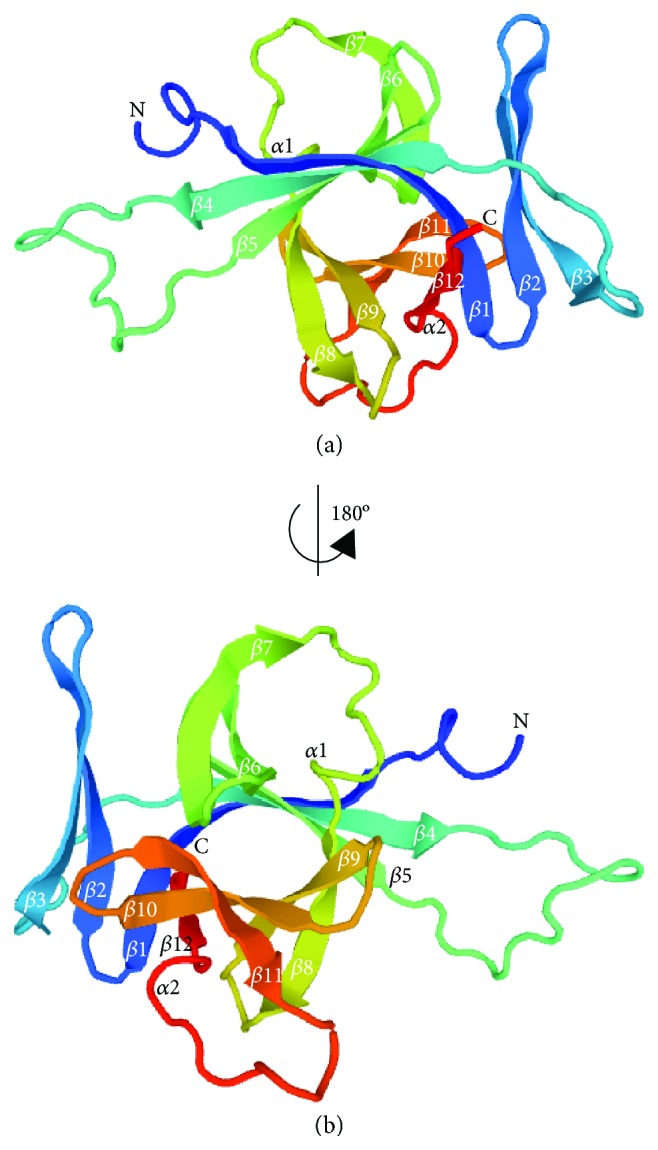Figure 1.

3D molecular structure of IL-33. IL-33 represented in a ribbon diagram with labelled secondary structures. Note the arrangement of the β-strands from β1 to β12 that are arranged from the N- until C-terminus tail (a). (b) The view of (a) correlated by a 180° rotation of the y-axis. IL-33 also acts as a ligand which binds to ST2, a high-affinity receptor family member [53]. A ternary complex formation is formed through the IL-33/ST2 complex formation with IL-1RAcP. Furthermore, the designated binding area is somewhat to be both polar and nonpolar regions, which facilitate specific binding between a ligand and a receptor.
